The Road Travelled: History of the Honda Civic
Unless you drive one or were unreasonably influenced by the first few films of the Fast and Furious franchise, the Honda Civic is a car you probably rarely ever think about.
The Civic is the automotive equivalent of wallpaper, a compact so successful and ubiquitous that even if you’ve never been an owner yourself, you undoubtedly know at least one person who has this affordable Honda parked in their driveway.
It wasn’t always this way. The Honda Civic had to fight an uphill battle in North America upon its initial release in the late 1970s in a bid to convince would-be buyers that the Japanese automaker could not only build affordable and fuel-efficient cars, but it could do so without sacrificing quality, reliability, or safety.
Four decades later, we have the benefit of hindsight to show us how that particular battle for the hearts and minds of North America was won. Let’s check out the long and remarkable history of the Honda Civic.
History of the Honda Civic
1973-1979: Shots Fired
The first-generation Honda Civic was important to the company in more ways than one. Not only did the Civic represent a chance to get the brand in front of North American drivers as something more than a builder of novelty sports cars and bikes, but the little hatchback itself represented the first real passenger car that broke free from the corporation’s motorcycle origins. This was no mini-truck or chain-driven roadster, and with a four-cylinder engine displacing just over one liter, the Civic presented the largest and mightiest drivetrain Honda had ever built.
With roughly 50 horsepower on tap, the tiny-but-practical Civic tipped the scales at just 1,500 lbs, demonstrating a bike builder’s acumen for proper power-to-weight ratios. Available with a four-speed manual gearbox (later a five-speed) and sold at a cut-rate price of around $2,200, the front-wheel drive hatchback (or two-door sedan) also offered power disc brakes for the forward axles, an optional two-speed Hondamatic transmission, and roughly 50 miles per gallon in an era where one energy crisis after the other was banishing thirsty land yachts to the back row of secondhand car lots.
ALSO SEE: Should You Buy a Used Honda Civic? Yes, Probably
Although the Japanese-market four-door sedan and four-door wagon versions of the Honda Civic would never officially make it across the ocean, a four-door version of the hatch would eventually debut towards the end of the vehicle’s initial production run (a few years after a two-door wagon appeared in 1975). A larger engine – 1.2-liters, with two additional horsepower – would also bow in 1974, followed quickly by the famed 1.5-liter Compound Vortex Controlled Combustion, or CVCC motor that would eventually push out 63 horses but more importantly added extra efficiency and a cleaner burn cycle that had the EPA smiling. The CVCC was so spic and span that it didn’t even need a catalytic converter to clean up tailpipe emissions, a marked difference from domestic models of the day.
1980-1983: On The Verge Of Being a Player
It only takes getting hit over the head with an oil embargo or two to realize that maybe it’s time to get serious about fuel efficiency. By the end of the original Civic’s run, Honda had sold 100,000 to Americans willing to take a chance on an upstart, but the breakthrough into the mainstream was still elusive. Enter the 1980-1983 Civic, a larger and somewhat more powerful version of the car that would democratize CVCC technology across both available four-cylinder engines (55 horsepower in a 1.3-liter or 67 horsepower in the 1.5-liter). A mix of four-speed and five-speed manuals continued to be offered, depending on which engine was specified.
ALSO SEE: 2017 Honda Civic Type R Review
With the platform now sitting two inches longer than the car it replaced, the Honda Civic also added a four-door wagon to the mix for the ’81 model year. As a bonus, the tiny cadre of import performance fans that existed at the beginning of that decade were enamored by the stiffly-sprung Civic S, what with its monster 13-inch radial tires and red-accented Honda emblem.
1984-1987: Hitting The Big Time
Chances are the version of the Honda Civic that debuted in 1984 is the one most people will call to mind when thinking about the first Civic they ever saw. Squared-off front and rear, this was the model of Honda’s compact competitor that spun off the famed two-seat CRX, the unique five-door ‘Shuttle’ wagon (which for a brief period could be had with four-wheel drive), and of course the bread-and-butter sedan and hatch variants
With the success of the two-door Prelude coupe that shared the previous generation’s platform, the new Civic stretched out five inches in the wheelbase department to make both vehicles that much more competitive. A 1.5-liter engine was now standard across the board for all but the cheapest of Civics, which continued on with the 1.3-liter unit, while a three-speed automatic transmission would eventually give way to a four-speed by 1986.
ALSO SEE: Top 10 Honda Civics of All Time
Of greater interest was the decision by Honda to dive deeper into the performance potential presented by the Civic. The previously mentioned CRX was available in two polar opposite trim levels: the Si, which in the U.S. included a 91 horsepower version of the three-valve 1.5-liter engine, and the HF, which emphasized efficiency via a special version of the 1.3-liter mill that was tuned to deliver 57 mpg. For the ’86 model year, the Si badge also found itself affixed to the four-passenger Civic hatchback, which featured more aggressive styling (but not the independent rear suspension offered by the previous generation’s Civic S).
1988-1991: Mainstream Status Achieved
It seems only fair that by far the best version of the Honda Civic to have hit American dealerships to date was the one that cemented the car’s status as a go-to choice for budget-conscious compact shoppers. Honda completely rethought the Civic’s chassis, returning to its independent rear suspension roots and adding a double-wishbone setup at the front. It also packed a longer wheelbase that provided a smoother and more stable ride. It also afforded the Civic with rounded styling that walked back the 1987’s hard edges, and it was a look that played well on both hatch and sedan models – as well as the very few wagons that still trickled into customer’s hands.
Speaking of fourth-generation Civic wagons, not many were aware at the time that the same 16-valve, 1.6-liter four-cylinder engine that produced 105 horsepower in the potent CRX Si was also standard with the five-door, long-roof body style (the Civic Si hatchback gained three additional horsepower for 108 in total). All other versions of the Civic were now packing 92 horsepower (matching the older generation’s Si) from a 16-valve 1.5-liter mill, with the exception of the value-focused base model and its detuned 70 horsepower version of that engine. Also of note for ’88 was the introduction of the sedan-only LX trim, which introduced niceties that included power door locks and windows, a tachometer, and intermittent windshield wipers, eventually to be superseded by the EX (which borrowed the Si engine).
1992-1995: Treading Water
Not much changed with the arrival of the fifth-generation Civic as a 1992 model, with Honda instead choosing to evolve and perfect the car’s winning formula. Styling continued to swap angles for curves, the wagon was axed in favor of a coupe, even more trim levels and available features were added, and VTEC – the brand’s famed variable-valve timing system – would make its debut.
VTEC would launch a thousand street racing careers as tuners quickly figured out that it was easy to mix and match engines from Japanese market cars or the otherwise unloved del Sol roadster (which was available with a twin-cam B16A3 pushing out 160 horsepower). Those who decided to stay stock benefited from a 125 horsepower version of the B16 in the Civic Si and Civic EX, or a choice of three other 1.5-liter four-cylinder engines: 102 horsepower for the DX trim, 70 horsepower for the thrifty CX, or a 92 horsepower VTEC tune focused on efficiency in the VX.
1996-2000: A Step Back From Performance
Things started to get a little vanilla for the Civic when the sixth generation debuted, and not just in terms of styling. Honda seemed to grow uncomfortable with its position as the favored automaker in the compact tuning scene and steadfastly refused to deliver an Si edition of the car until the 1999 model year. Even then it was exclusively available as a coupe instead of the sporty hatchback that had become so familiar.
ALSO SEE: Top 10 Cars the 2017 Honda Civic Type R Beats on the Nurburgring
Instead of thrills, Honda instead focused on efficiency (with initial experimentation in natural gas drivetrains producing the Civic GX pictured above). The hatch now rode on the same wheelbase as the two-door and four-door versions of the Civic, but the only engine available was a 1.6-liter, 106-horsepower four-cylinder. The frugality started once you hit the HX trim with its VTEC-E carrying over from the older VX but now offering 115 horsepower along with the first-ever continuously variable automatic transmission option offered with the car. It was coupe-only, like the Si would be when it once again became available for a two year stretch at the end of this generations’s lifespan. The Si would gain a 160 horsepower versions of the B16A2 four-cylinder, (modified from the del Sol which would itself disappear before the end of the decade), while the Civic EX (coupe and sedan) would soldier forward with a 127-horsepower 1.6-liter engine.
2001-2005: Aiming For the Middle
The seventh-generation Honda Civic managed to avoid getting any bigger, and sheet metal also remained familiar, if tweaked, but there were more significant changes made beneath the skin. Double-wishbones were gone up front with MacPherson struts taking their place, a move that would introduce more interior room and a smoother ride but draw the ire of performance fans. Drivetrain-wise, the Civic EX retained its 127-horsepower rating but now featured a 1.7-liter engine, which would offer 117 horsepower in lesser trims. The CVT was now used in the returned Civic HX, the new version of the fleet-specific GX, and a hybrid model that delivered 46 mpg city and 51 mpg highway that would arrive in 2003.
ALSO SEE: 2017 Honda Civic Si Review
The reluctance to engage with the Civic’s sporting past continued. The hatchback body style was off the table entirely until Honda imported its two-door Euro-market hatch to North America as a 2002 model and sold it as the Si in the United States. It featured a torquey K20A3 four-cylinder that produced 160 horses and 132 lb-ft of twist from its 2.0-liters of displacement, an engine that was shared with the base model Acura RSX of the same year.
2006-2011: The Hatch Is Dead (for now)
The Honda Civic hatchback didn’t return when the eighth-generation car went on sale for the 2006 model year. In fact, the eight-gen Civic broke free from older versions of the compact in a number of ways: its styling was radically different (with its broader look, more upright windshield, and stubbier proportions), the interior featured a unique two-tier dashboard, and when the Si model did appear, it didn’t cut any corners. Performance fans benefited from a 197 horsepower, high-revving 2.0-liter four-cylinder engine that was fun to push to redline with its six-speed manual gearbox and limited-slip front differential.
The Civic Si was available as both a coupe and a sedan. The remainder of the Civic lineup used a 1.8-liter, 140 horsepower four-cylinder motor (with an available five-speed auto or five-speed manual gearbox), while the GX natural gas and Civic Hybrid also continued to ply their wares (albeit with a lower 40 mpg city/45 mpg highway rating for the latter). The GX expanded its availability beyond fleet buyers, making it one of the few natural gas options available outside of the truck world.
2012-2015: The Big Do-Over
The global recession hit the auto industry hard, and at Honda it caused a major re-think as to what future economy car customers would want in a vehicle. Unfortunately, the Japanese giant guessed wrong: while the rest of the biz continued to move its compact cars in a more premium direction, Honda cut corners on the redesigned ninth-generation Civic in a bid to keep prices low, anticipating a horde of value-seeking buyers that never materialized. The end result was a car that underperformed in comparison to its peers, and which felt noticeably barebones – if not cheap – compared to past Civic efforts.
ALSO SEE: 2017 Honda Civic Si vs Volkswagen GTI Comparison
Response to the car was so lackluster that Honda undertook an eleventh-hour refresh of the Civic that would arrive in 2012, vastly improving the vehicle and stocking it with a full complement of modern equipment. A 1.8-liter, 140 horsepower engine remained standard (eventually bumped to 143 horses), the GX and Hybrid models were also continued (with 110 horsepower available from each), and the Si graduated to a 2.4-liter four-cylinder motor that produced 201 horses and 170 lb-ft of torque (punched to 205 ponies and 174 lb-ft in 2014) – albeit in low-revving, and less dramatic fashion than in its predecessor.
2016-present: Major Mood Swing
Anxious to recapture its title as the king of compacts, Honda made sweeping changes to the 10th-generation Civic. In addition to extroverted – and some might say over-the-top – styling, the Civic added turbo power for the first time in its 40-year history. Now much lighter than it’s been in years, it arrived with a long list of luxuries available on the options list. The current Civic starts out with a 158 horsepower, 2.0-liter four-cylinder engine (matched with either a six-speed manual transmission or a CVT) and graduates to a turbocharged 1.5-liter motor that’s good for 174 horsepower and 167 lb-ft of torque. You can also get the Civic as a sedan, coupe and the hatch returns for this generation, too.
The Civic Si turns up the boost to squeeze 205 horses out of that same unit, while the race-ready Type R makes its North American debut with an adaptive suspension system, big brakes, and 306 horsepower from a larger, 2.0-liter turbo motor. The Type R also returns the hatch to the Civic fold, as it’s only available in five-door format, helping the car come full-circle from its modest 1970s roots.
More by Benjamin Hunting



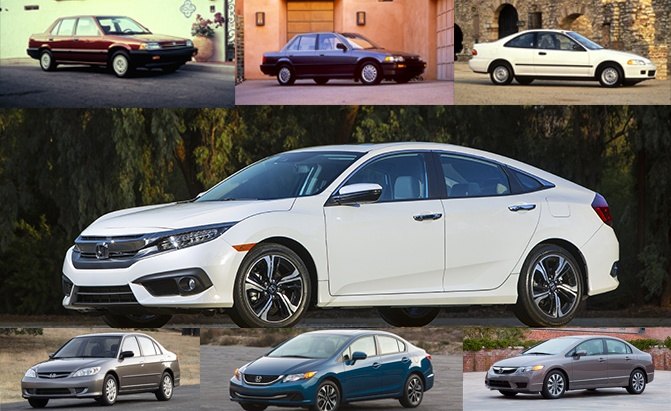
























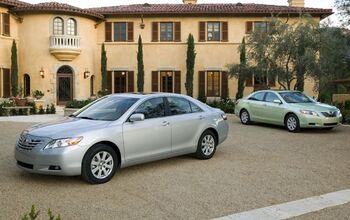

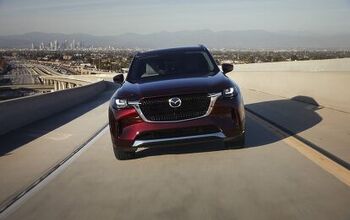

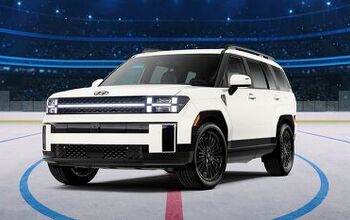

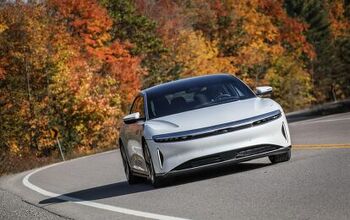


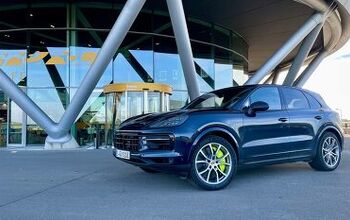


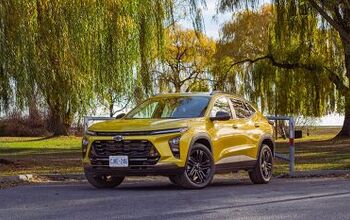
Comments
Join the conversation